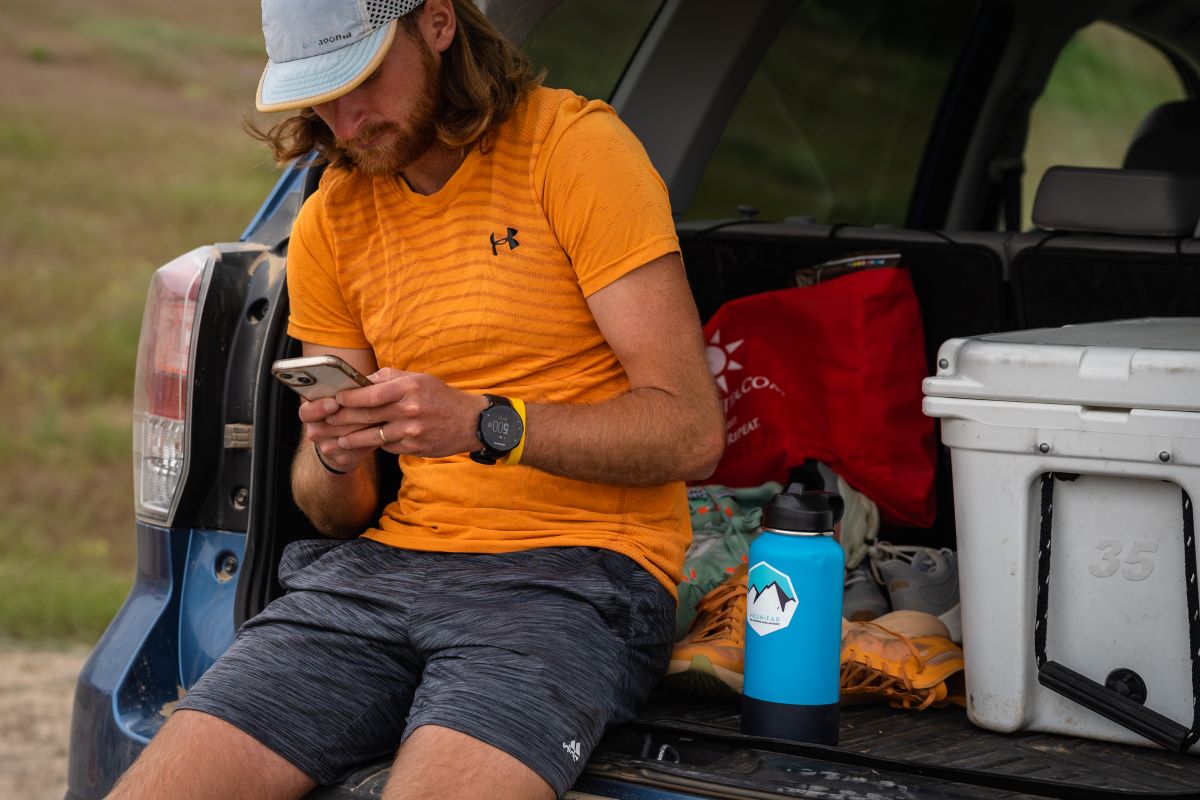I remember when I first encountered the running world on social media. I was in graduate school. And while I was surrounded by edifying friendships and classmates with whom I had a lot in common, none of these people were interested in the same idiosyncratic activity that I was — trail running and ultrarunning. I had no in-person friends who participated in the sport. I still don’t.
But I found trail runners and ultrarunners online, thousands of weirdos — I mean athletes — spread across continents, trying to see how far they could run. I was emboldened by their adventures and grateful to connect. Since those days, many of these people have become friends. I see them at races. In between races, I keep track of their feats from afar.
When I feel lonely on a long run, I remember that these people are also out there, doing the same work that I am doing, aiming at similar objectives.
The Value of Digital Spaces
There are many reasons to be grateful for social media as a runner. The first is — as I described above — the consolidation of community. I have no doubt that the access to one another that social media facilitates has grown the sport. It permits us to build friendships, to learn from one another, and to stay connected, cross-continentally, and over long stretches of time when we do not see each other very much.
Social media also facilitates fandom. Perhaps I cannot fly to the Alps at the beginning of the fall semester for UTMB. Nevertheless, I can cheer for Courtney Dauwalter, Jim Walmsley, and Zach Miller from home, tracking their progress as they circumnavigate Mont Blanc, and celebrate their feats from afar. Through social media, I can admire excellent runners and be motivated to become excellent myself.
However, as both a source of information and a nexus of community, running social media has limitations. There are predictable distortions in self-presentation and sources of misinformation, in learning about the sport through this format. So, here are a few things to keep in mind:
1. Everyone Down-Steps
If you scroll through social media, you might come to believe that everyone has a beautiful stride and levitates through the air as they run. But gravity comes for us all.
Looking through my race photos, it sometimes appears that the floor is lava or that my body is a crayon melting into the ground. These moments capture the down-step of my stride. Sometimes I look very mad — like Panera is all out of cream cheese or something. I do not post these photos online. Very few people do.
So, please remember that looking bad is part of the process of running hard, regardless of what appears on social media.
Also, our down-steps could be worse! We could live on Jupiter. There is more gravity there. There would be no upward steps. Every race photo would be terrible.

Sabrina Little demonstrates the lesser spotted (on social media, at least) down-step. Photo: David Little
2. Beware the File Drawer Effect
The file drawer effect is a phenomenon in the social sciences, in which negative results go unpublished.
For example, a scientist conceives of an exciting hypothesis, she runs some tests, and her results do not corroborate the hypothesis. The scientist is unmotivated to publish anything about it. Now suppose someone does eventually get a positive finding in support of this hypothesis. If no one has published their negative findings, there exists no balance of evidence in the scientific literature against this hypothesis. The hypothesis looks favorable. This is called the file drawer effect.
On running social media, the file drawer effect is descriptive of our self-reporting. Many runs are boring. What do you post about those? Many runs go wrong, or they are otherwise unpleasant. It is much easier to post about the good runs.
This creates a distorted presentation of the sport. The balance of evidence supports a picture of trail running and ultrarunning as consistently engaging and happy. And, if your personal experiences in the sport are more mixed or mundane, it might seem like something is wrong with you.
Nothing is wrong with you. Bad runs happen to good people, and boring runs are the norm rather than the exception.
3. Investigate Expertise
I once signed onto the application formerly known as Twitter. There were two tweets in a row: The first said that eggs are healthy. The second, from a different source, indicated eggs would be the source of my imminent demise. Contradictory reports! Breakfast that morning was tricky.
Often online, it is difficult to discern expertise. So, rather than acquiescing to the loudest or most aggressive person posting on the internet, it can be helpful to first investigate the credentials of the speaker. There are two fallacies that are helpful to know about to navigate expertise well.
The first is the ad verecundium fallacy.
This fallacy concerns a faulty appeal to authority. An example is this: My dentist is highly qualified to give me guidance about tartar control, but I would not ask him whom I should vote for or what I should eat before a long run. He is an authority, but not an authority in those areas.
Often online, people position themselves as sages — eager to make claims beyond the scope of their training. It can be easy to confuse “authority” with “authority in the relevant respect” — taking guidance from the wrong people, or from someone with a degree, yet not the relevant degree.
So, if you receive training, nutrition, or health advice online, make sure it is from someone with the educational background that makes their advice credible. Or just avoid taking internet advice altogether.
The second fallacy is bandwagon.
Bandwagon is the mistake of appealing to the masses for guidance. Online, we often use a person’s following as a proxy for figuring out whether their voice is credible. For example, many “influencers” have large follower counts, so we assume they must be good sources of information.
But a large follower count can mean any number of things — charisma, good looks, subsidized follower counts, or connections. It does not mean that the things they teach about sport, health, or life are worthwhile or true.

As with most topics, we can find any amount of running advice on social media, but it must be approached with caution. Photo: iRunFar/Eszter Horanyi
Final Thoughts
Social media can be a great facilitator of running friendships, a tool for growing the sport, and a resource for learning about training and racing. But it is a limited tool, with regular distortions and possible pitfalls. Here I named three.
I do not think any of these are surprising, but sometimes it is nice to be reminded that life as it appears on our digital rectangles is not often the best representation of life as it actually is.
Call for Comments
- Do you find social media helpful in growing and maintaining your circle of running friends?
- Are there any other drawbacks you find with using social media than those detailed above?

